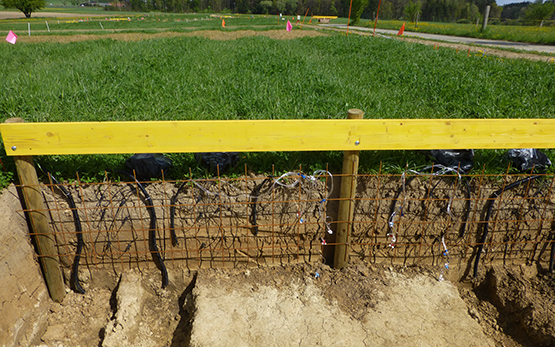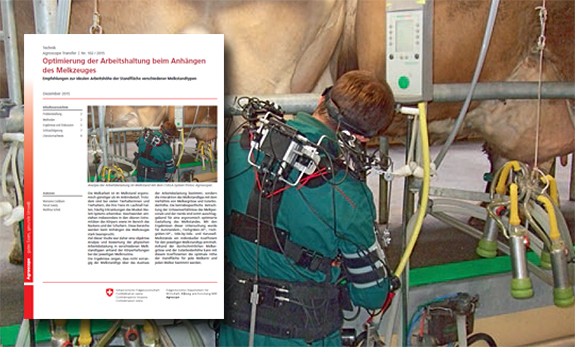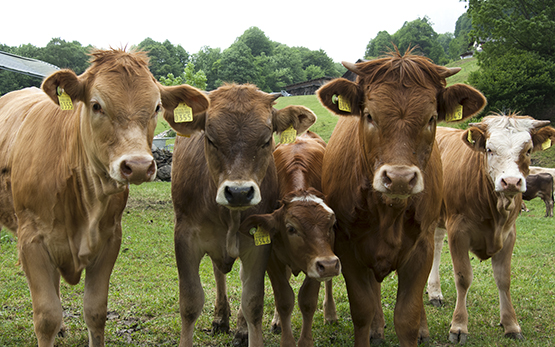Wyss C.
Schlank und glücklich mit Slowfeeding-Systemen?
usus: Fachzeitschrift des BTS, April, 2023, 13-16.
Wyss C., Zollinger A., Bachmann I.
Was wir aus dem Lernverhalten der Pferde für Ausbildung und Training lernen können.
Dans: Spezialwebinarreihe Wohlbefinden. 25. Mai, Ed. Verein Förderung Forschung Pferd FFP, Online. 2023, 1-7.
Zollinger A., Wyss C., Bardou D. , Bachmann I., Briefer S., Gmel A.
Box social pour étalons : Bilan des tests réalisés au Haras national suisse.
Dans: Journées sciences et innovations équines. 1er et 2 juin, Ed. Institut français du cheval et de l'équitation IFCE, Saumur. 2023, 1-4.
Zollinger A., Wyss C., Bardou D., Bachmann I.
Social box: a new housing system increases social interactions among stallions.
Animals, 13, (1408), 2023.
Zollinger A., Wyss C., Bachmann I., Bardou D.
Optimisation of individual housing of breeding stallions thanks to the possibility of physical contact.
Dans: Aktuelle Arbeiten zur Artgemässen Tierhaltung 2022. 26. November, Ed. Kuratorium für Technik und Bauwesen in der Landwirtschaft e.V., Darmstadt. 2022, 218-228.
Wyss C., Zollinger A., Bachmann I.
Was wir aus dem Lernverhalten der Pferde für Ausbildung und Training lernen können.
Dans: FFP-Jahrestagung 2022 - Ausbildung und Training von Sportpferden. 2. Juli, Ed. Verein Förderung Forschung Pferdesport, Haltern am See. 2022, 1-7.
Gmel A., Zollinger A., Wyss C., Bachmann I., Briefer S.
Social Box: Influence of a new housing system on the social interactions of stallions when driven in pairs.
Animals, 12, (9), 2022, 1-14.
Wyss C.
Die artgerechte Haltung von Hengsten.
Pferdewoche, (Februar), 2022, 28-31.
Ferrer C., Chopin P., Wyss C., Bachmann I., Briefer S.
Utilisation de symboles et communication de préférences.
Dans: Journées sciences et innovations équines. 20-21 mai, Ed. Institut français du cheval et de l’équitation, Le Pin au Haras. 2021, 1-4.
Wyss C.
Integration von femden Pferden in eine neue Gruppe.
Kavallo, 6, 2021, 32-33.
Wyss C., Bollhalder N.
Changer d'écurie sans stress.
Der Freiberger = Le Franches-Montagnes, 233, 2021, 24-25.
autres langues: allemand
Wyss C.
Changement d'écurie: un stress important pour les chevaux.
Der Freiberger = Le Franches-Montagnes, 232, 2021, 18-19.
autres langues: allemand
Ferrer C., Chopin P., Wyss C., Bachmann I., Briefer S.
Conception et expérimentation d'un dispositif permettant aux chevaux de communiquer leurs préférences à travers l’utilisation de symboles.
Dans: 16ème Réunion annuelle du réseau de recherche équine en Suisse. 29.04., Ed. Agroscope, Avenches. 2021, 1.
Wyss C.
L'hébergement de chevaux en groupe, un défi passionnant!
Der Freiberger = Le Franches-Montagnes, 227, 2020, 18-19.
autres langues: allemand
Wyss C., Zurkinden H.
Sozialverhalten von Hengsten: Hengste unter sich - die Faszination des Verhaltens von Hengsten mit eindrücklichen Filmsequenzen illustriert.
Dans: Equitana Open Air@Home. 07. - 9. August, Avenches - Agroscope, SNG Online. 2020.
Wyss C., Roig-Pons M.
Hiérarchie et relations sociales dans les groupes de chevaux.
Bulletin, 08, 2020, 30-36.
autres langues: allemand
Wyss C., Zollinger A.
Häppchen gefällig?
Pferde Zucht & Haltung, 1, 2019, 96-99.
Wyss C.
Optimisation de la détention des chevaux Partie 1: Détention en box individuel.
Der Freiberger = Le Franches-Montagnes, 198, 2018, 16-17.
autres langues: allemand
Wyss C.
Natur liefert Ideen.
Kavallo, 3, 2018, 30-31.
Wyss C.
Optimisation de la détention des chevaux - Partie 3 : Mouvement pour les chevaux.
Der Freiberger = Le Franches-Montagnes, 200, 2018, 20-21.
autres langues: allemand








